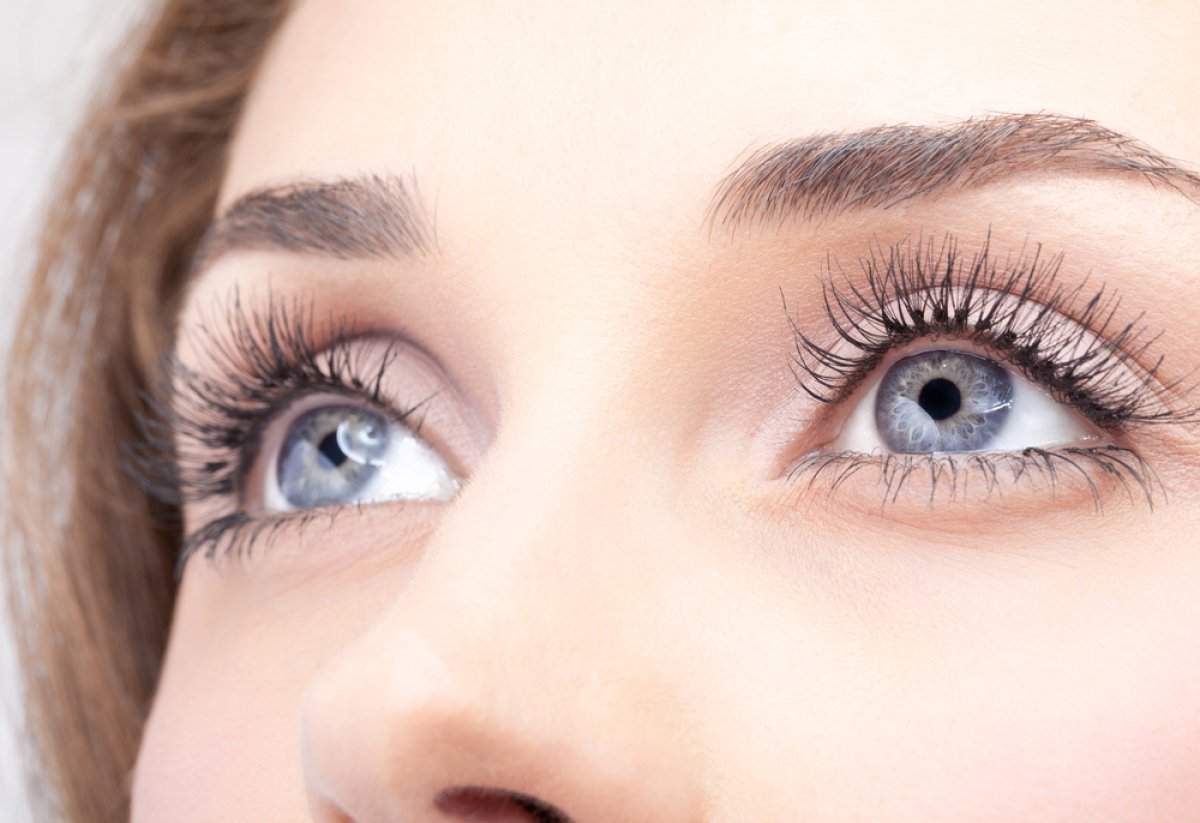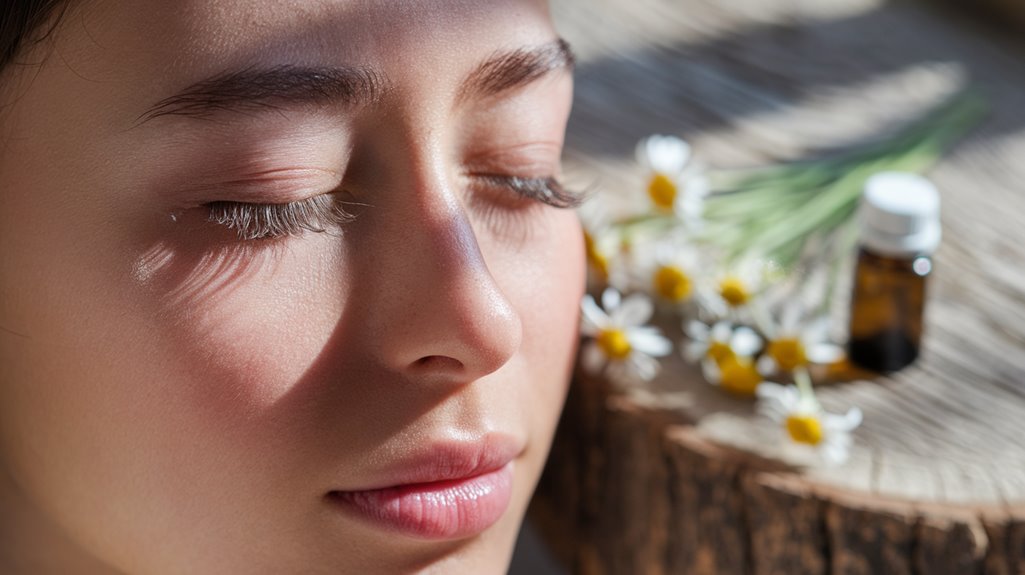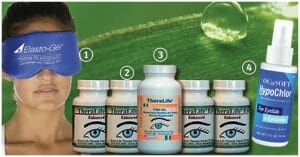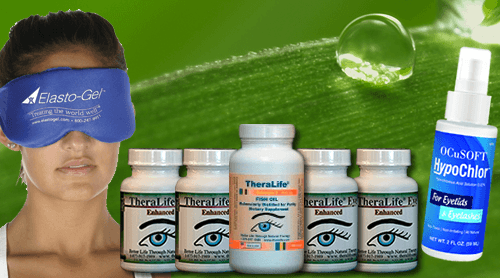To effectively manage and alleviate dry eyes, it’s essential to address the root cause and maintain eye health over the long term. Theralife.com offers a range of products designed to gently relieve dry eyes and prevent potential long-term damage, such as corneal scarring. Their comprehensive approach targets the underlying dysfunction in the tear film, which often results from factors such as age or environmental conditions, by balancing fatty oils, aqueous fluid, and mucus.
Theralife’s products offer several benefits to customers by utilizing natural and scientifically-backed treatments. For instance, their formulations can help improve visual disturbances and relieve discomfort, such as burning or itchiness, associated with dry eyes. By incorporating natural remedies like warm compresses and proper hydration, Theralife’s solutions aim to maintain a healthy tear film, thereby enhancing overall eye comfort and health.
Additionally, Theralife.com provides a wealth of resources and insights on effective strategies to further improve eye conditions. By exploring these options, customers can better understand how to enhance their eye health and find relief from various symptoms, ensuring a comprehensive and holistic approach to eye care.
All Natural Treatment For Chalazion- TheraLife
Key Takeaways
- Gentle relief minimizes irritation, reducing the risk of corneal damage and infection from severe dry eye conditions.
- It helps maintain a healthy tear film, preventing tear evaporation and ensuring adequate eye surface hydration.
- Natural remedies and gentle treatments can alleviate discomfort without adverse side effects associated with some medications.
- Managing dry eye symptoms with gentle methods encourages long-term eye health and prevents potential complications.
- Holistic and gentle approaches support overall well-being, addressing both symptoms and underlying causes of dry eyes.
Understanding Dry Eyes
Understanding dry eyes begins with recognizing the complexity of tear film dysfunction and its myriad causes. Aging, hormonal changes, and certain medical conditions like Sjögren’s syndrome play significant roles. You should be aware that medications such as antihistamines and environmental factors like dry air can exacerbate the condition. The tear film, composed of fatty oils, aqueous fluid, and mucus, is essential for eye health. Dysfunction in any layer, decreased production, or increased evaporation heightens dry eye risk. In some cases, severe dry eye can lead to damage or infection of the cornea, which may require medical intervention. Prevention strategies focus on lifestyle adjustments and dietary considerations. Incorporate vitamin A and omega-3 fatty acids into your diet, maintain hydration, and use artificial tears regularly. Awareness and proactive measures are vital to maintaining tear film integrity and alleviating the risk of developing dry eyes. Blepharitis and corneal abrasions are potential complications of untreated dry eye that can significantly affect eye health.
Common Symptoms
Dry eye symptoms manifest through a range of indicators affecting both comfort and vision. Recognizing these symptoms is essential for effective discomfort management.
Here are some common symptoms you might experience:
- Visual Disturbances: Blurred vision, glare, or halos, especially noticeable when reading or using screens, can greatly affect your daily activities.
- Physical Discomfort: You may feel persistent irritation, such as itchiness, scratchiness, or even a burning sensation. Reflex tearing might paradoxically accompany dryness. Addressing underactive tear production is crucial, as it is a root cause that can exacerbate these physical discomforts.
- Increased Sensitivity: Sensitivity to light and environmental factors like wind can exacerbate symptoms, leading to excessive blinking or eyelid twitching. Prolonged screen time significantly contributes to reduced blink rates, which can worsen these symptoms.
Accurate symptom recognition aids in seeking appropriate interventions, ensuring you manage discomfort effectively and maintain ideal eye health.
Identifying these signs early helps in addressing the underlying issues.
Triggers and Causes
To address dry eye effectively, you must consider various triggers and causes that can affect tear production.
Environmental factors like dry air and pollution can accelerate tear evaporation, while age-related changes naturally reduce tear secretion. The use of contact lenses is also a significant risk factor, contributing to the development of dry eye disease. Additionally, certain autoimmune disorders and medications can exacerbate dry eye symptoms by affecting tear composition and production.
Understanding these elements helps in identifying potential interventions to mitigate dry eye symptoms.
Insufficient Tear Production
When tears aren’t produced adequately, several triggers and causes may be at play, leading to insufficient tear production. A stable tear film is essential for maintaining ocular health, and its disruption can result from various factors:
- Medication-Induced Dry Eyes: Antihistamines, decongestants, NSAIDs, isotretinoin, diuretics, and beta-blockers can interfere with tear production, impacting the tear film and ocular health.
- Diseases and Medical Conditions: Conditions like Sjögren’s syndrome, thyroid problems, diabetes, rheumatoid arthritis, and lupus can lead to insufficient tear production. Untreated dry eye can lead to further complications such as corneal damage and tissue scarring, emphasizing the importance of addressing these underlying conditions. Autoimmune disorders, such as Sjögren’s syndrome, often involve the immune system attacking healthy tissues, which exacerbates tear production issues.
- Aging and Hormonal Changes: Age-related changes and hormonal shifts during menopause, pregnancy, or from birth control pills can reduce tear production.
Understanding these triggers helps address the root causes, promoting better management of dry eye symptoms.
Environmental Impact Factors
Addressing dry eyes necessitates a thorough understanding of both internal and external factors. Environmental humidity plays a significant role; low humidity, whether due to air conditioning or winter conditions, accelerates tear evaporation, worsening dry eye symptoms. High temperatures paired with low humidity further exacerbate this issue. Air quality is equally important, as pollutants and particulate matter disrupt the tear film, leading to irritation and dryness. Urban environments, with their higher pollution levels, often present harsher conditions for eye health. Pollution and smoke in city areas are significant contributors to dry eye, as tiny particles lodge in the tear film and reduce its ability to lubricate the eyes. Hot, dry climates can contribute significantly to the discomfort experienced by individuals suffering from dry eyes. Here’s a breakdown of environmental triggers:
| Factor | Impact on Dry Eyes |
|---|---|
| Low Humidity | Increases tear evaporation |
| Poor Air Quality | Causes eye irritation |
| High Temperature | Raises dry eye risk |
| Urban Air Pollution | Exacerbates dry eye symptoms |
Understanding these factors can guide effective management strategies.
Age-Related Dryness
As you age, several factors contribute to the increased risk of dry eyes, primarily due to changes in tear production and quality.
Age-related factors, such as reduced tear production, greatly impact eye health. Hormonal influences, especially during menopause, decrease estrogen levels, affecting tear quality. The lacrimal gland‘s efficiency diminishes, resulting in insufficient tear production. Common medications for older adults can induce or worsen dry eyes, adding to the challenges faced with age. Decreased heart function also plays a role by limiting micro-circulation, which affects the blood supply to the eyes.
Consider these critical points:
- Tear Production Decrease: Aging naturally reduces tear production, impacting tear film stability.
- Hormonal Changes: Menopause leads to hormonal shifts, diminishing tear quality and contributing to dryness.
- Lacrimal Gland Function: Decreased gland efficiency further exacerbates tear insufficiency.
Understanding these factors helps you identify and manage dry eye symptoms effectively, ensuring you maintain eye health as you age.
Importance of Gentle Relief
You should prioritize gentle relief methods to alleviate dry eye discomfort while minimizing irritation. By supporting natural tear balance, these approaches can enhance eye comfort without introducing additional stress to the ocular surface. Opt for treatments that align with your eye’s physiology to maintain health and function effectively. Consider solutions like TheraLife, which are clinically proven to reduce symptoms and improve tear production. Seeking professional help is crucial for persistent symptoms to ensure that the underlying causes of dry eye are properly addressed.
Alleviate Discomfort Naturally
When dealing with dry eyes, gentle relief is essential for maintaining ocular health and comfort. Embracing natural remedies offers a holistic approach. Consider these methods:
- Herbal Infusions: Integrating herbal infusions into your routine can soothe irritation. Chamomile or fennel teas, rich in anti-inflammatory properties, may provide relief when used as eye rinses or compresses.
- Eye Yoga: Practicing eye yoga involves exercises that enhance eye muscle flexibility and promote relaxation. Techniques such as palming and focused gazing can alleviate discomfort by reducing strain and encouraging natural tear production.
- Warm Compresses: Applying gentle, warm compresses to closed eyelids helps open oil glands, releasing natural oils to slow tear evaporation and improve eye comfort. Managing prolonged digital device usage is also crucial, as it can contribute to eye strain and exacerbate dry eyes. Incorporating anti-inflammatory agents like those found in TheraLife Eye Enhanced can further alleviate irritation and support eye health.
Adopting these strategies supports ocular wellness through gentle, natural relief.
Minimize Eye Irritation
Natural remedies play a pivotal role in alleviating dry eye discomfort, yet addressing environmental and lifestyle factors is equally important for minimizing irritation. Effective eye care demands a strategic approach to moisture retention. Limit exposure to dry environments, utilize humidifiers, and wear protective eyewear to mitigate irritants. Adequate sleep supports immune system and inflammation control, which is essential for reducing dry eye symptoms. Additionally, reducing screen time and positioning digital devices correctly can considerably lower eye strain and enhance comfort. For those experiencing Meibomian Gland Dysfunction, warm compresses can be an effective home remedy to relieve symptoms and improve gland function.
| Strategy | Action | Benefit |
|---|---|---|
| Limit screen time | Take frequent breaks | Reduces eye strain |
| Avoid dry environments | Use humidifiers | Enhances moisture |
| Protective eyewear | Wear sunglasses, goggles | Shields from irritants |
| Screen positioning | Lower screen height | Slows tear evaporation |
| Reduce irritants | Stop smoking | Decreases inflammation |
Consistency in these practices guarantees peak moisture retention and minimized irritation.
Support Tear Balance
Although the complexities of tear film balance might seem challenging, understanding its essential role in eye health is critical. A healthy tear film, composed of oil, water, and mucus layers, guarantees proper lubrication balance, protecting your eyes from irritation.
Here’s why maintaining this balance is imperative:
- Lubrication Balance: The oil layer prevents tear evaporation, guaranteeing consistent moisture and protection.
- Moisture Distribution: The water layer spreads tears evenly across your eye surface, providing essential hydration.
- Adhesion Support: The mucus layer helps tears adhere, preventing dry spots and irritation.
When any layer is compromised, tear film dysfunction occurs, leading to dry eye symptoms. Reflex tearing can occur when the eye attempts to compensate for dryness, often resulting in overproduction of tears that lack the necessary lubricating components. Factors like age, environment, and lifestyle can affect this balance. TheraLife’s Eye Autoimmune Formula contains immuno-modulators that help regulate the immune system to reduce flare-ups and restore tear film balance. Addressing these factors with appropriate treatments can restore tear film integrity and alleviate discomfort.
Natural Remedies Overview
Exploring natural remedies for dry eyes involves understanding key dietary considerations and environmental adjustments. Embracing a holistic approach includes incorporating natural supplements like omega-3 fatty acids, found in fish oil and walnuts. These nutrients are essential for tear production and eye health. Boosting Vitamin A and B12 intake also plays a important role in alleviating symptoms.
Environmental adjustments complement dietary changes. Utilizing humidifiers and wearing protective eyewear can considerably reduce irritants. Maintaining a clean workspace and limiting screen time further supports eye comfort.
| Dietary Considerations | Environmental Adjustments |
|---|---|
| Omega-3 Fatty Acids | Use Humidifiers |
| Fish Oil Supplements | Wear Protective Eyewear |
| Boost Vitamin A and B12 | Limit Screen Time |
Hydrating the Eyes Naturally
To effectively manage dry eyes, integrating dietary and environmental strategies can be further improved by focusing on hydrating the eyes naturally.
Natural eye care involves practical hydration techniques that are both simple and effective. Regular blinking and the 20-20-20 rule are fundamental. These techniques aid in rejuvenating the tear film and maintaining ideal hydration.
Additionally, guaranteeing you drink enough water supports tear production and overall eye health, enhancing natural eye care.
Consider the following hydration techniques:
- Use a Humidifier: Keep your environment moist, which helps maintain eye moisture.
- Limit Screen Time: Reducing screen exposure and taking frequent breaks can alleviate symptoms.
- Stay Hydrated: Consuming 8 to 10 glasses of water daily guarantees proper tear film function.
These strategies collectively promote healthy, hydrated eyes.
Diet and Nutrition Tips
When managing dry eyes, an expert approach involves focusing on diet and nutrition to enhance eye health and alleviate symptoms.
The dietary benefits of including omega-3 fatty acids from fish, flaxseed, and walnuts are significant, as they reduce inflammation and support tear health. Leafy greens, rich in Vitamin C, lutein, and zeaxanthin, are nutrient sources that promote eye health and prevent vision loss.
Nuts and seeds offer omega-3s and Vitamin E, essential for combating age-related damage. Hydration plays an important role; drinking enough water guarantees proper tear production.
Essential vitamins like A, B2, B6, B12, and E protect and lubricate the eyes. To achieve the best results, reduce processed foods and consult a healthcare provider about supplements.
Lifestyle Adjustments
While lifestyle adjustments can greatly impact dry eye management, focusing on hydration and environmental conditions is paramount.
Implementing effective hydration strategies is essential for maintaining tear production. Here’s how you can optimize your lifestyle choices:
- Hydration: Drink at least eight glasses of water daily. In hotter climates, increase intake. Include hydrating foods like cucumbers and watermelon in your diet.
- Environmental Control: Use humidifiers to add moisture to indoor air and mitigate tear evaporation. Avoid windy and dry environments to protect your eyes from irritants.
- Screen-Time Management: Implement the 20-20-20 rule—every 20 minutes, look at something 20 feet away for 20 seconds. This reduces strain and promotes blinking.
These targeted adjustments support eye health and alleviate dry eye symptoms effectively.
Long-term Eye Health
Addressing lifestyle adjustments lays a strong foundation for managing dry eye symptoms, but ensuring long-term eye health demands a deeper understanding of potential complications and their prevention.
Untreated dry eye can lead to conjunctivitis, keratitis, and even vision loss. Preventive measures are essential; consider advanced dry eye clinics for personalized care.
Holistic approaches, including managing underlying diseases like diabetes and lupus, are critical. Meibomian and lacrimal gland dysfunctions require attention to prevent ocular tissue damage.
Prescription medicines such as cyclosporine can enhance tear production, while punctal plugs help retain moisture.
Be aware of photophobia and corneal surface vulnerabilities. By integrating these strategies, you can effectively safeguard your eyes and maintain ideal eye health over the long term.
Frequently Asked Questions
What Are the Potential Side Effects of Prescription Eye Drops?
When considering prescription eye drops, you should be aware of potential side effects like irritation, blurred vision, and increased sensitivity to light.
More serious issues include glaucoma, cataracts, or allergic reactions.
It’s crucial to use them under a professional’s supervision and monitor for persistent side effects.
Exploring eye drop alternatives may reduce these risks.
Prioritize side effect awareness to guarantee you’re choosing the safest option for your eye health.
How Do Punctal Plugs Work to Alleviate Dry Eyes?
Imagine a tiny dam that holds back a river, and that’s what punctal plugs do for your eye’s tear drainage.
By blocking the puncta, these plugs—whether dissolvable or permanent—prevent tears from draining too quickly. This keeps your eyes moist and alleviates symptoms of dry eyes like irritation and redness.
They offer a minimally invasive, effective solution that can complement other treatments, ensuring your eyes remain comfortably hydrated.
Can Wearing Makeup Worsen Dry Eye Symptoms?
Yes, wearing makeup can worsen dry eye symptoms.
Makeup ingredients like preservatives and fragrances can irritate your eyes, compromising your eye health.
Application methods can block meibomian glands, essential for tear film production, leading to dryness.
Makeup particles may disrupt tear film, increasing evaporation.
Opt for hypoallergenic, cream-based products and avoid waterproof items to minimize irritation.
Always use gentle removers and clean your face thoroughly to maintain eye health.
Are There Any Risks Associated With Intense Pulsed Light Therapy?
When considering intense pulsed light therapy, you should be aware of safety concerns such as temporary discomfort, redness, and swelling.
There are risks like erythema, edema, and light sensitivity. For dark-skinned individuals, nonspecific thermal damage is possible.
Confirm your provider is qualified to minimize complications like infection or scarring.
Discuss treatment alternatives with your doctor, evaluating potential risks and benefits, and follow all aftercare instructions to guarantee ideal outcomes.
How Effective Are Scleral Lenses for Severe Dry Eye Cases?
Scleral lenses work miracles for severe dry eye cases.
You’ll experience scleral lens benefits like constant hydration and corneal protection. They act as a therapeutic shield, preventing further irritation while providing ongoing moisture.
Unlike temporary fixes, these lenses offer a long-term solution, ensuring a healthier appearance and improved comfort.
Tailored to your needs, they’re a medically necessary option for those who’ve exhausted primary treatments, making them indispensable for chronic sufferers.
Conclusion
In managing dry eyes, seeking gentle relief is essential, much like a gardener tending to delicate blooms. TheraLife.com offers a range of products designed to provide natural and effective solutions for various eye conditions, including dry eyes, blepharitis, and uveitis. By understanding symptoms and triggers, TheraLife’s products support customers in adopting natural remedies and lifestyle changes, such as maintaining hydration and adjusting diet, to sustain long-term eye health. Their holistic approach ensures eyes remain vibrant and comfortable, reducing reliance on harsh treatments. Investing in TheraLife’s solutions is an investment in overall well-being, nurturing eye health for a more comfortable life.





